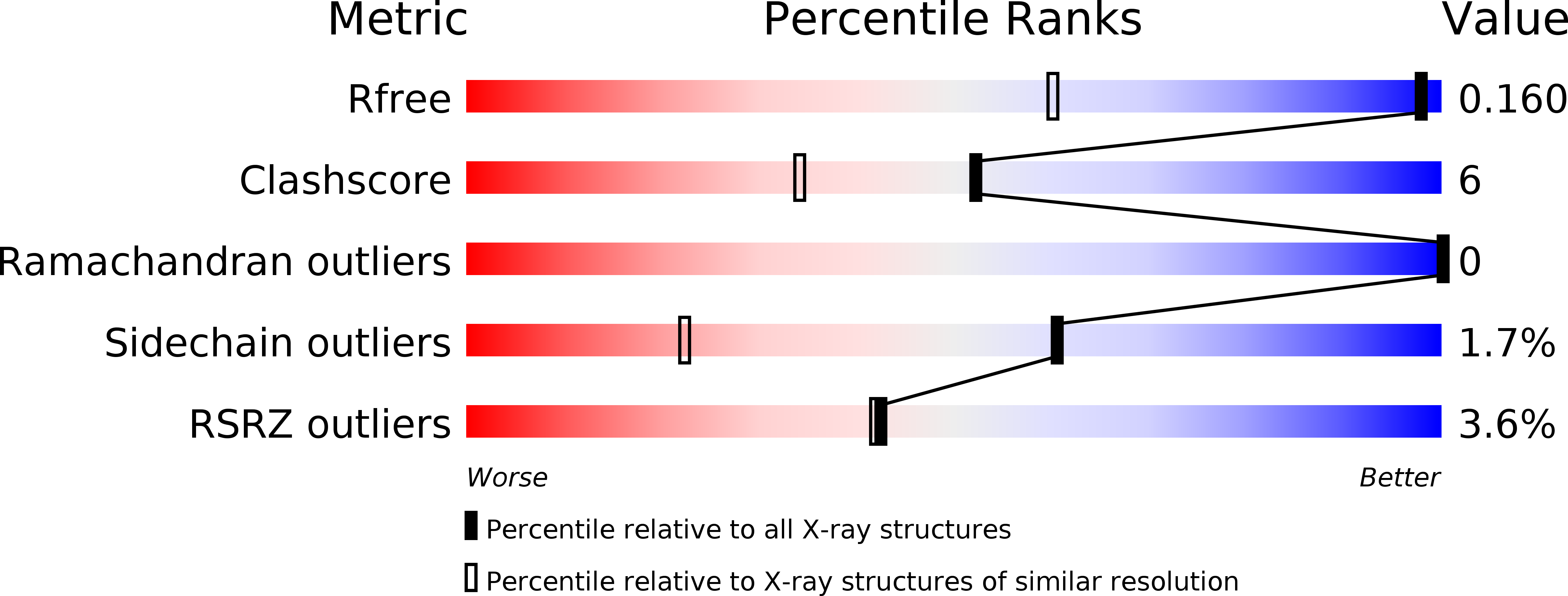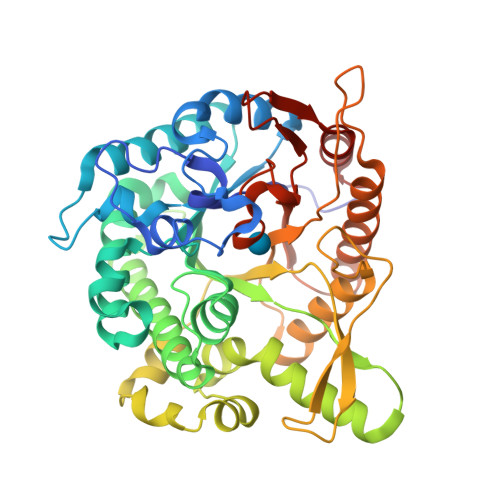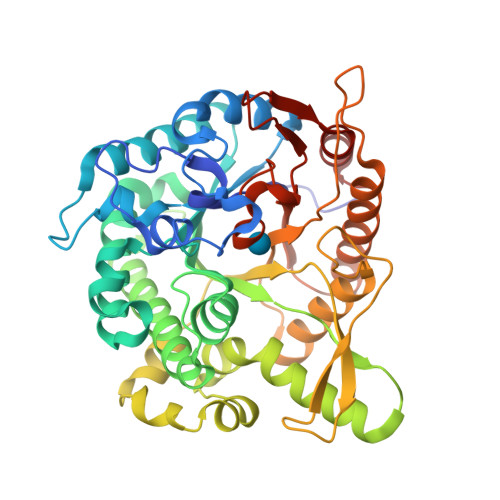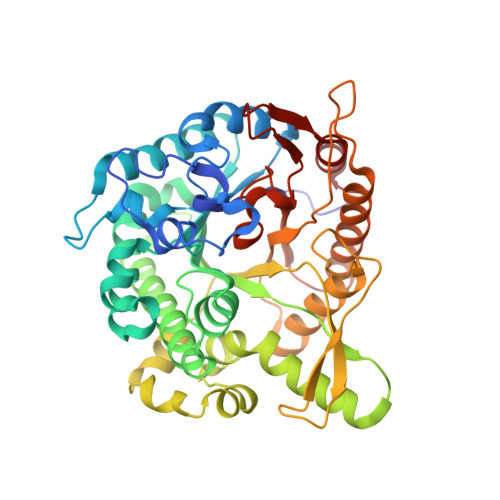Structural insights into the substrate recognition properties of beta-glucosidase.
Nam, K.H., Sung, M.W., Hwang, K.Y.(2010) Biochem Biophys Res Commun 391: 1131-1135
- PubMed: 20005197
- DOI: https://doi.org/10.1016/j.bbrc.2009.12.038
- Primary Citation of Related Structures:
4HZ6, 4HZ7, 4HZ8 - PubMed Abstract:
Beta-glucosidase enzymes (EC 3.2.1-3.2.3) hydrolyze sugars and are implicated in a wide spectrum of biological processes. Recently, we reported that beta-glucosidase has varied kinetic parameters for the natural and synthetic substrates [K.H Nam, S.J. Kim, M.Y. Kim, J.H. Kim, T.S. Yeo, C.M. Lee, H.K Jun, K.Y. Hwang. Crystal structure of engineered beta-glucosidase from a soil metagenome, Proteins 73 (2008) 788-793]. However, an understanding of the kinetic values of beta-glucosidase has not yet enabled the elucidation of its molecular function. Here, we report the X-ray crystal structure of beta-glucosidase with a glucose and cellobiose fragment from uncultured soil metagenome. From the various crystals, we obtained the pre-reaction (native), intermediate (disaccharide cleavage) and post-reaction (glucose binding) states of the active site pocket. These structures provide snapshots of the catalytic processing of beta-glucosidase. In addition, the intermediate state of the crystal structure provides insight into the substrate specificity of beta-glucosidase. These structural studies will facilitate elucidation of the architectural mechanism responsible for the substrate recognition of beta-glucosidase.
Organizational Affiliation:
Division of Biotechnology, College of Life Sciences & Biotechnology, Korea University, Seoul 136-701, South Korea.

















